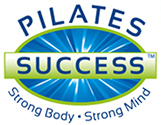The history of Pilates

I discovered Pilates at my local gym, quite by accident, several years ago after practicing Yoga for many years. I have a fractured spine and herniated disc caused by a car accident at the young age of 16 that was constantly being aggravated by sitting at a computer all day. As fit as I was, I was constantly plagued by back pain – UNTIL I DISCOVERED PILATES.
We run Pilates classes for beginners and intermediate level as well as stretch classes, personal training, postural assessments and senior programs. I use studio reformers, Wunda Chair, Trapeze in semi private & private classes also using many small Pilates apparatus including balls, therband, rollers & magic circle.
The following information and history, has been sourced from my Trainers manual, supplied to me by the The Pilates Academy.
The Pilates Method is a complete and thorough program of mental and physical conditioning. Many of the small therapeutic movements in Pilates can be modified for people recovering from injuries or intensified to enhance the skill base of elite athletes and dancers.
Attracting people of all ages and levels of fitness, the Pilates Method of exercise has become extremely popular worldwide. Its benefits include correcting muscular imbalances, realigning the body, and building core strength from the inside out.
Abdominal and low-back strength is essential for everyday life, sports, and recreational activities. Learning to stabilise the core properly in all daily activities will help to prevent injury and make for a stronger overall body.
German born Joseph H. Pilates (1880-1967) was an accomplished boxer, gymnast, and circus performer. He personally triumphed over a succession of physical ailments, including asthma and rheumatic fever, by devoting himself to the practice of athletics.
Pilates believed in training the mind and body to work together toward the goal of overall fitness. Although born in a different era, Joseph Pilates understood the physical and mental pressures of a busy schedule. He sought to re-educate us to work our bodies with the efficiency of performing our daily tasks in mind.
Pilates believed that his method would propel people to become more productive both mentally and physically. For this reason the Pilates mat work is designed to fit into the physical and time constraints of the individual without diminishing its comprehensive elements.
Pilates went to England in 1912, where he worked as a self-defence instructor for detectives at Scotland Yard. At the outbreak of World War I, Pilates was interned as an “enemy alien” with other German nationals. During his internment, Pilates refined his ideas and trained other internees in his system of exercise.
Pilates saw amputees dying simply because they were not moving and their bodies wasted away. He rigged springs to hospital beds, enabling bedridden patients to exercise against resistance, an innovation that led to his later equipment designs.
An influenza epidemic struck England in 1918, killing thousands of people, but not a single one of Joe’s trainees died. This, he claimed, testified to the effectiveness of his system.
The exercises and equipment that he designed 80 years ago are now finding a large audience because conventional programs have failed. Pilates works the deeper muscles to achieve efficient and graceful movement, improve alignment and breathing, and increase body awareness. They deliver simultaneous stretching and strengthening in a non-impact balanced system of body/mind exercise.
The Pilates method of exercise has been very popular with dancers since the 1940s but it is now becoming much better known. Today his followers include dancers, athletes, physiotherapists, fitness trainers, health care providers and other professionals who appreciate the significant role exercise plays in restoring and maintaining good health
Joe continued to train clients at his studio until his death in 1967 at the age of 87. In the 1970s, Hollywood celebrities discovered Pilates via Ron Fletcher’s studio in Beverly Hills. Where the stars go, the media follows. In the late 1990s, the media began to cover Pilates extensively. The public took note, and the Pilates business boomed.
Today, millions of people practice Pilates, and the numbers continue to grow.
